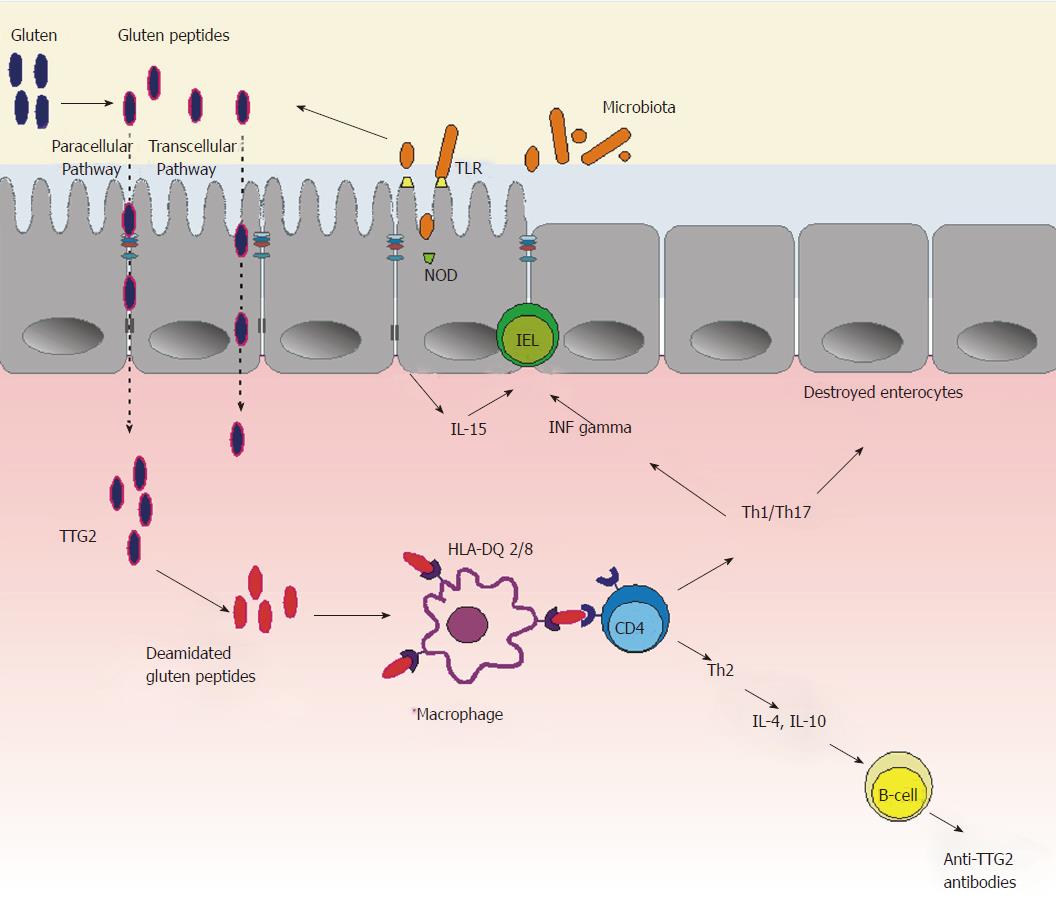Copyright
©The Author(s) 2017.
World J Gastroenterol. Nov 14, 2017; 23(42): 7505-7518
Published online Nov 14, 2017. doi: 10.3748/wjg.v23.i42.7505
Published online Nov 14, 2017. doi: 10.3748/wjg.v23.i42.7505
Figure 3 Schematic illustration of celiac disease pathogenesis.
Microbiota dysbiosis activates innate immunity resulting in pro-inflammatory changes, which leads to IEL infiltration and epithelial barrier disruption. This ultimately results in an increased paracellular and transcellular transfer of immunogenic gluten peptides and activation of adaptive pro-inflammatory Th1/Th17 pathways, leading to villous atrophy and production of autoantibodies against intestinal TTG2. HLA: Human leucocyte antigen; IEL: Intraepithelial lymphocyte; IL: Interleukin; INF: Interferon; NOD: Nucleotide-binding oligomerization domain; Th: T helper; TLR: Toll-like receptor; TTG2: Tissue transglutaminase 2.
- Citation: Cukrowska B, Sowińska A, Bierła JB, Czarnowska E, Rybak A, Grzybowska-Chlebowczyk U. Intestinal epithelium, intraepithelial lymphocytes and the gut microbiota - Key players in the pathogenesis of celiac disease. World J Gastroenterol 2017; 23(42): 7505-7518
- URL: https://www.wjgnet.com/1007-9327/full/v23/i42/7505.htm
- DOI: https://dx.doi.org/10.3748/wjg.v23.i42.7505









